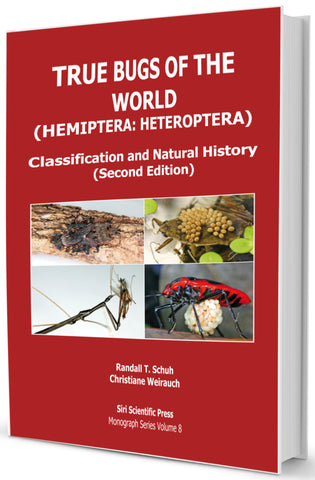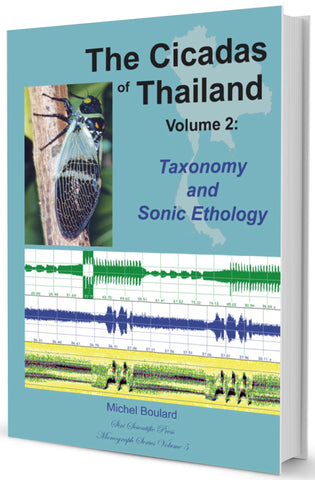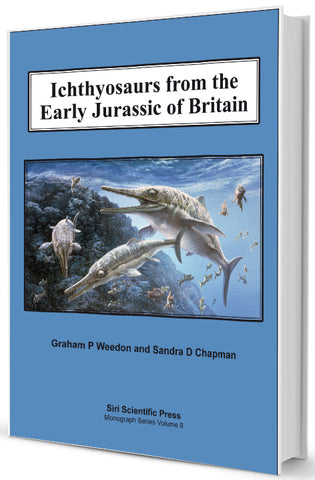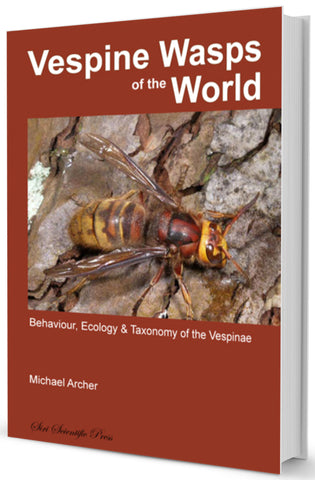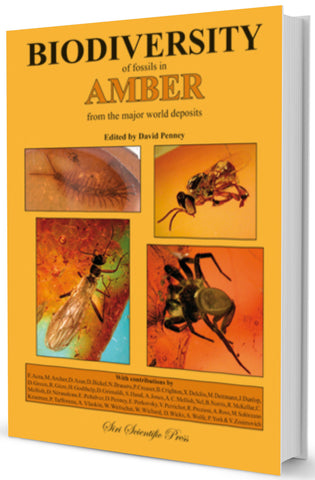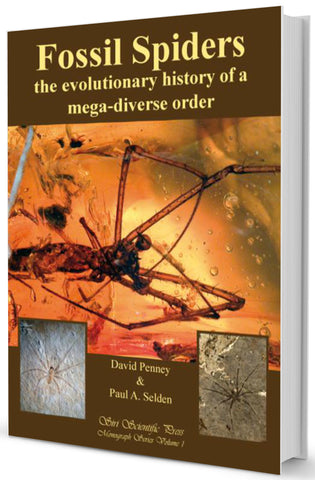
Fossil Spiders: The Evolutionary History of a Mega-diverse Order
by David Penney and Paul A. Selden
Siri Scientific Press (2011) 978-0-9558636-5-3 (MONOGRAPH SERIES VOLUME 1) RRP £39.99
128 pp, 240 x 165 mm, hard cover, 87 black and white photos
IN STOCK - Ships Within 24 Hours
Reviews
Spider club of S Africa Newsl.: Although this is a scientific monograph the authors have used language accessible to anyone interested in palaeontology, arachnology or both. All of the text is supported by very fine black and white illustrations of the fossils themselves and such amazing things as the HR-CT 3D reconstructions, from which to make physical, three-dimensional models. It is an absolutely fascinating book and I keep dipping into it just for the sheer joy of a well presented and easily understandable translation of complex science.
ZooKeys: ...an absolutely unique book in the spider literature to date. It is authoritatively written by two of the leading researchers in this field and provides broad coverage of their combined 50 years experience and expert knowledge. The book is hard back and presented on high quality glossy paper. It is richly illustrated thoughout by numerous high quality photographs of fossil spiders. In conclusion, this book deserves a place on the shelves of the libraries of all professional and amateur arachnologists alike, in addition to those of invertebrate palaeontologists.
Priscum (2015, slightly modified as the original review related to two SSP volumes): Penney and Selden combine a well-established phylogeny of modern spider families with the known fossils of these groups to produce a phylogenetic tree of spider evolution, demonstrating the potential importance of this fossil record for calibrating key evolutionary events and processes, including the impact of mass extinctions and the co-evolution of plants, insects, and spiders. ... The best comparison to this excellent monograph is the magisterial volume by Grimaldi and Engel on the History of Insects. This likewise should be in the library of every student of fossil arthropods and modern arachnids and of anyone interested in the evolution of terrestrial biotas.
From the back coverCompared to insects, fossil spiders have received only scant attention in the literature. Previously, the only works available were numerous scientific papers, many published in foreign languages. Most of these are basic descriptive taxonomic works, with very few considering broader biological concepts. Despite a significant increase in the discovery and description of fossil spiders within the last quarter century this void remained unfilled. Thus, this short monograph aims to achieve several objectives. First, to provide general and up to date background information on the overall importance and diversity of fossils spiders, including an indication of those groups for which the taxonomy is spurious and in need of reassessment. Second, to discuss the techniques available for working with fossil spiders and some of the problems encountered by palaeoarachnologists, including bias and limitations of the spider fossil record. Third, the overall evolutionary history of spiders is summarized in the form of an evolutionary tree, which is subsequently used to address key issues of broad interest, such as origins, diversifications and extinctions, including the effects of mass extinctions and predator–prey co-radiations. Finally, the contribution that fossil data can make to understanding the past and present biogeography of the order is considered. This book should be of interest to both amateur and professional arachnologists and palaeontologists and will also serve as a general palaeontological reference work for neontologists studying extant spiders.
We Also Recommend

